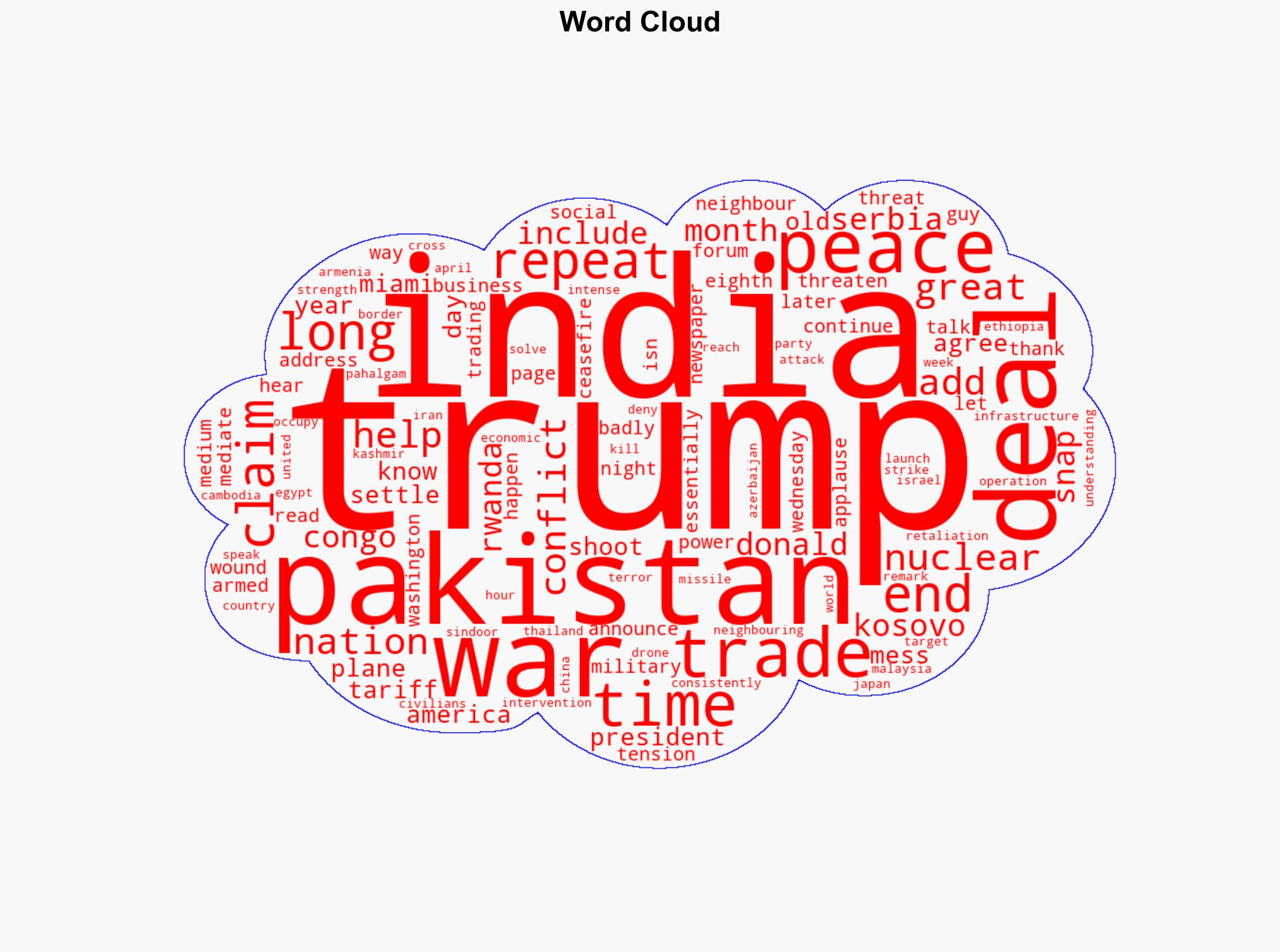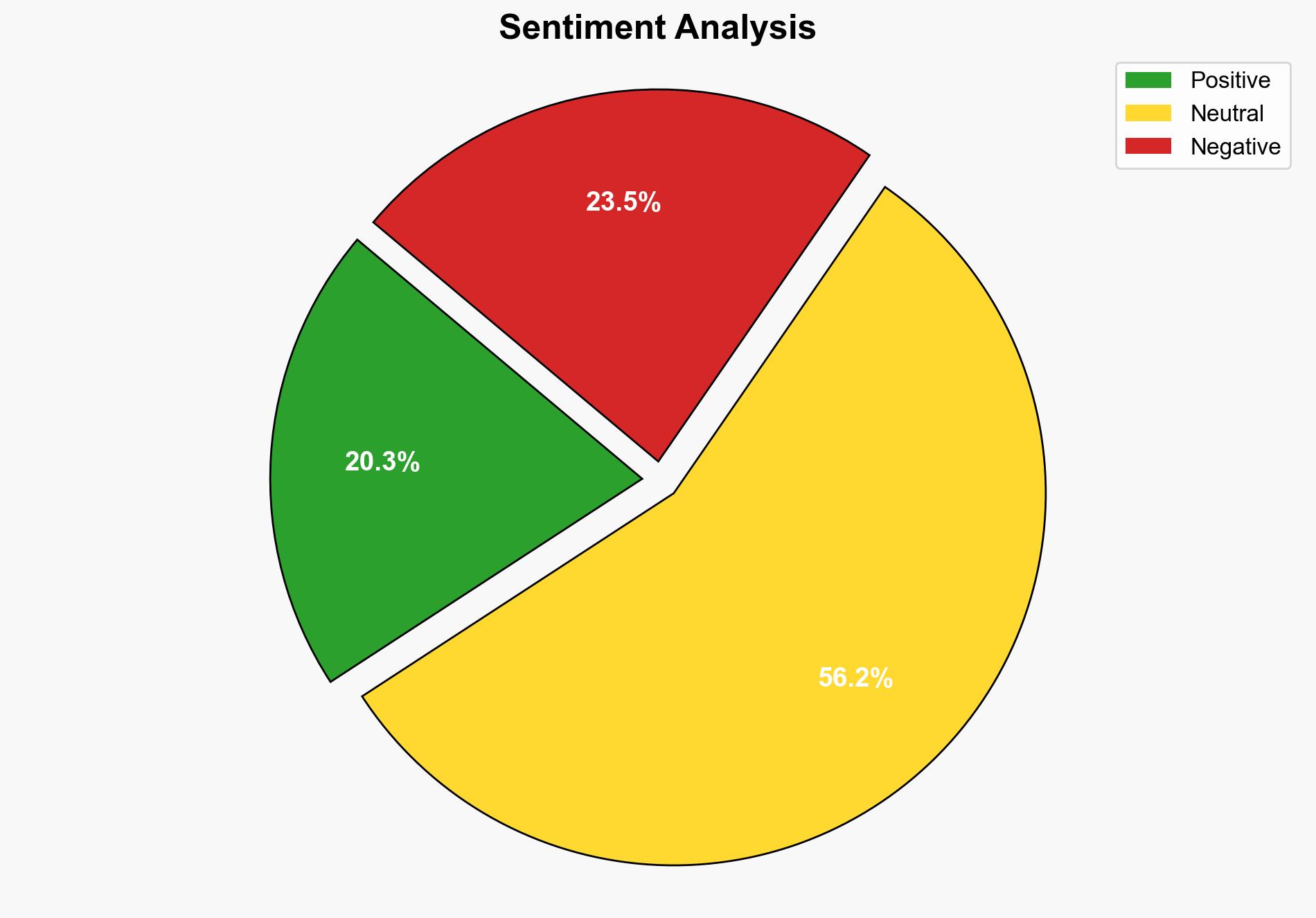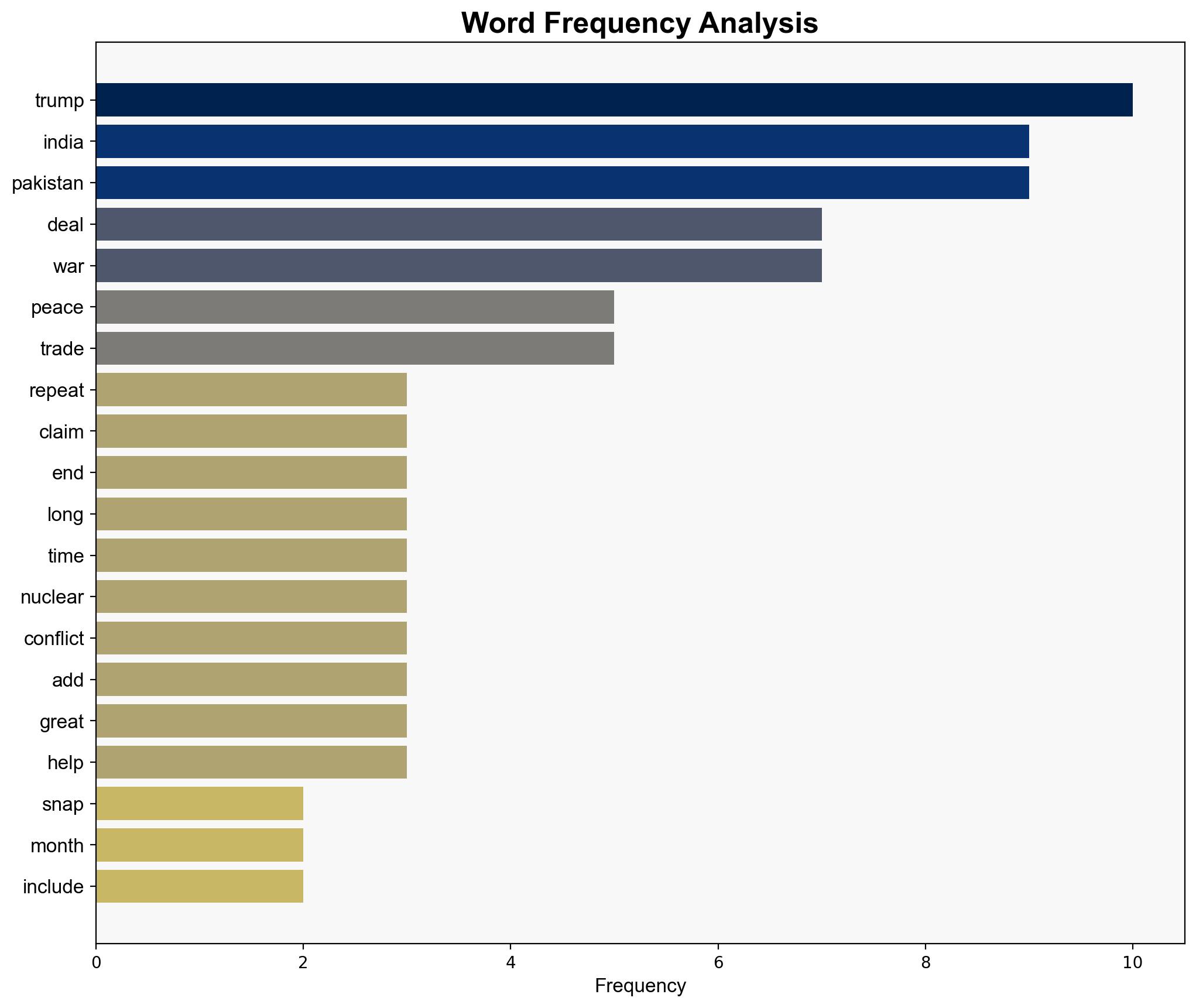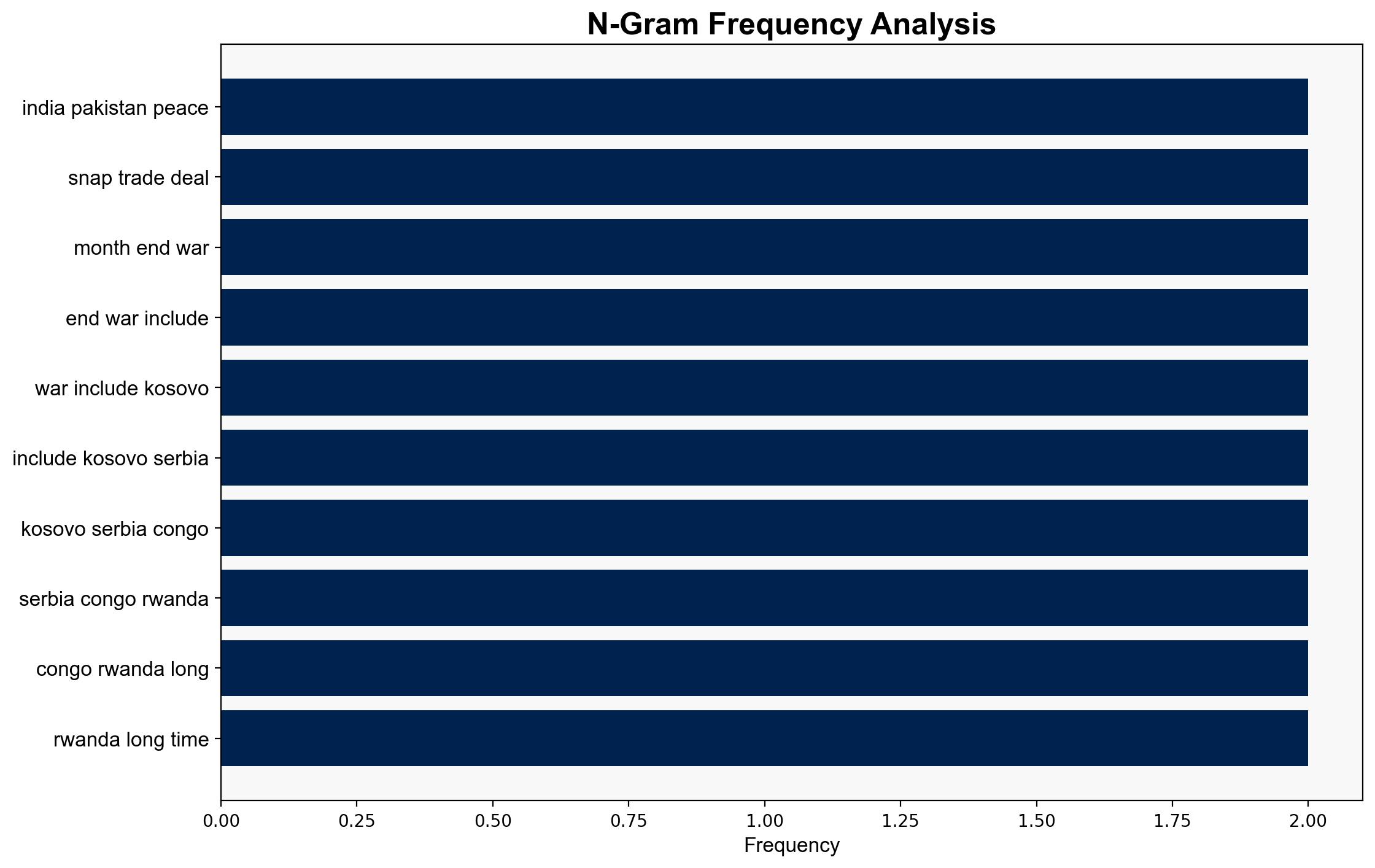Trump Repeats Claim That India Pakistan ‘Made Peace’ After His Threat To Snap Trade Deals – Ndtvprofit.com
Published on: 2025-11-06
Intelligence Report: Trump Repeats Claim That India Pakistan ‘Made Peace’ After His Threat To Snap Trade Deals – Ndtvprofit.com
1. BLUF (Bottom Line Up Front)
The most supported hypothesis is that Trump’s claim of mediating peace between India and Pakistan is exaggerated and primarily aimed at bolstering his image as a global peacemaker. Confidence in this assessment is moderate, given the lack of corroborative evidence from India or Pakistan. It is recommended to monitor diplomatic communications between the involved nations for any shifts in narrative or policy that could indicate a change in regional stability.
2. Competing Hypotheses
1. **Hypothesis A**: Trump’s intervention was a decisive factor in India and Pakistan reaching a ceasefire agreement. This hypothesis suggests that his threat to snap trade deals directly influenced the de-escalation.
2. **Hypothesis B**: Trump’s claim is an exaggeration, and the ceasefire was primarily due to internal diplomatic negotiations between India and Pakistan, independent of external pressure from the United States.
Using the Analysis of Competing Hypotheses (ACH) 2.0, Hypothesis B is better supported. There is no substantial evidence from Indian or Pakistani sources confirming U.S. mediation, and India has consistently denied external intervention.
3. Key Assumptions and Red Flags
– **Assumptions**: Hypothesis A assumes that economic threats are a significant lever in diplomatic negotiations between nuclear-armed states. Hypothesis B assumes that regional dynamics and historical context are more influential than external threats.
– **Red Flags**: The lack of acknowledgment from India and Pakistan regarding U.S. involvement is a critical red flag. Additionally, Trump’s broad claims of resolving multiple global conflicts may indicate a pattern of overstatement.
– **Blind Spots**: Potential undisclosed diplomatic channels or backdoor negotiations that might not be publicly acknowledged.
4. Implications and Strategic Risks
– **Geopolitical**: Misinterpretation of U.S. influence could lead to strained diplomatic relations if perceived as undermining regional sovereignty.
– **Economic**: Threats to trade deals could impact bilateral economic relations, affecting regional markets.
– **Psychological**: Public perception of U.S. involvement in regional conflicts may influence nationalistic sentiments in India and Pakistan, potentially escalating tensions.
5. Recommendations and Outlook
- Monitor official statements from India and Pakistan for any shifts in their stance on U.S. involvement.
- Engage in diplomatic dialogue to clarify the U.S. position and intentions, reducing potential misinterpretations.
- Scenario Projections:
- Best Case: Improved U.S.-India-Pakistan relations with increased economic cooperation.
- Worst Case: Heightened tensions due to perceived external interference, leading to economic and military escalation.
- Most Likely: Continued regional stability with occasional diplomatic friction.
6. Key Individuals and Entities
– Donald Trump
– Indian Government
– Pakistani Government
7. Thematic Tags
national security threats, geopolitical dynamics, diplomatic relations, regional stability





